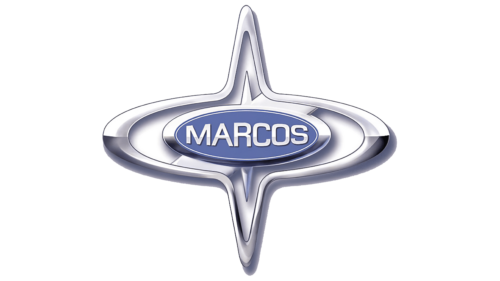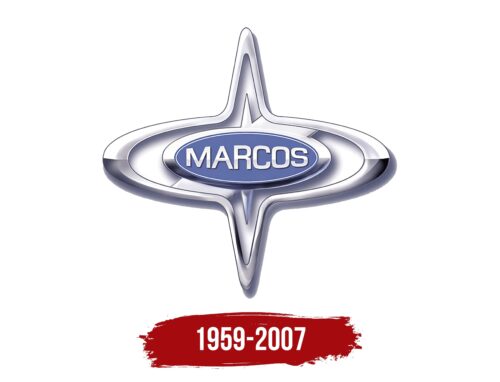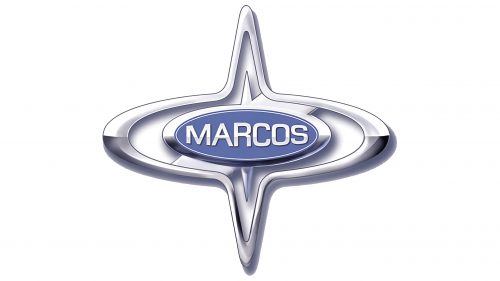The Marcos logo resembles a star born from speed experts’ combined knowledge and efforts. The company’s cars possess powerful strength and capabilities for conquering racetracks. The emblem emphasizes the vehicles’ durability and agility.
Marcos: Brand overview
1959, Jem Marsh and Frank Costin brought a company to life, creating a British automotive legend. With Marsh handling business and Costin, an aeronautical engineer, focusing on design, they aimed to craft lightweight, aerodynamically efficient sports cars. The debut model, the Marcos GT Xylon, featured a fiberglass body and a wooden monocoque chassis, setting the stage for innovation.
The 1964 release of the Marcos GT 1800, powered by a Volvo engine, marked a practical turn. The 1960s brought the company into the motorsports spotlight with the GT 1800’s success at events like the 24 Hours of Le Mans and the British Saloon Car Championship. Road versions of their racers, such as the Marcos 1800 GT and the Marcos 3.0 Litre V6, also gained popularity. The 1972 launch of the Mantis, with its hatchback body style, showcased the brand’s versatility.
Canadian businessman Jeff Marcos took the helm in 1971, introducing models like the Marcos Mantula and the Marcos Mantis, equipped with Rover and Ford engines. The 1980s and 1990s saw the company produce limited quantities of high-performance sports cars. Production paused briefly in 1997, resuming in 1998 under new management.
The early 2000s proved challenging, with financial difficulties stemming from high production costs, a limited market, and growing competition. New models like the Marcos TSO and Marcos GTC attempted a revival, but the company ceased car production in 2007.
The company has carved out nearly 50 years of automotive history and is known for its unique and charismatic sports cars. Its lightweight designs and aerodynamic efficiency left a lasting mark on the sports car industry. Racing successes solidified its reputation as a performance-oriented manufacturer. The Marcos legacy is celebrated by automotive enthusiasts worldwide for its innovative designs and racing heritage.
Meaning and History
What is Marcos?
Marcos was a British car manufacturer celebrated for its distinctive, performance-oriented sports cars. The brand earned a reputation for innovative designs, lightweight construction, and racing success, with Marcos vehicles noted for their unique aesthetics and dynamic driving experience.
1959 – 2007
The company’s logo features cosmic contours, resembling a new planet emerging on the sports horizon. The two elongated poles symbolize the two founders’ contributions. One end points downward and the other upward, representing one founder’s work on high-speed cars and the other’s on fighter planes.
The inner spikes resemble compass needles, indicating movement. The company closely monitors market fluctuations and adjusts direction according to consumer interests. The spikes also evoke a speedometer needle, emphasizing the sporty nature of the cars.
The company’s name, derived from the first syllables of the founders’ surnames, Marsh and Costin, is written in the central oval. Two professionals united to create a stellar representative of the automotive world.
A broad diagonal stripe runs across the logo like a winner’s ribbon. The metallic hue and victory theme highlight the founders’ resilience. The company endured collapse and bankruptcy. Only Jem Marsh’s perseverance saved the project. The company had to be practically revived from the ashes, and the founder’s persistence extended the project’s life for another 40 years.





